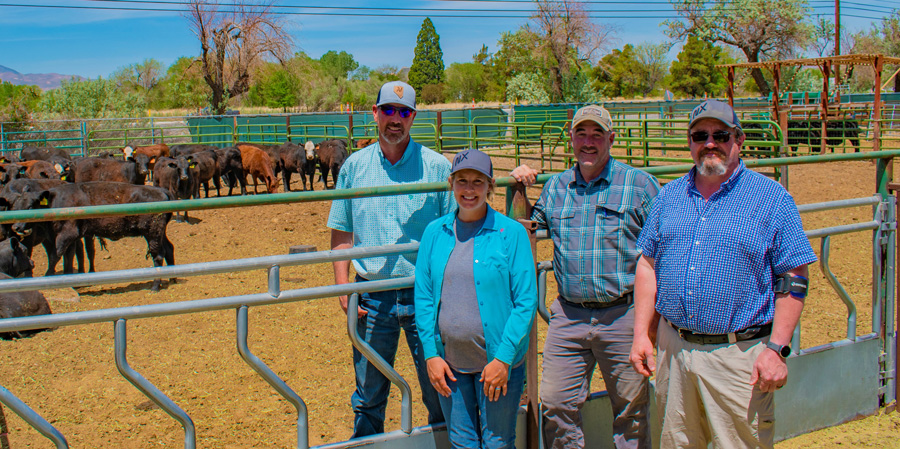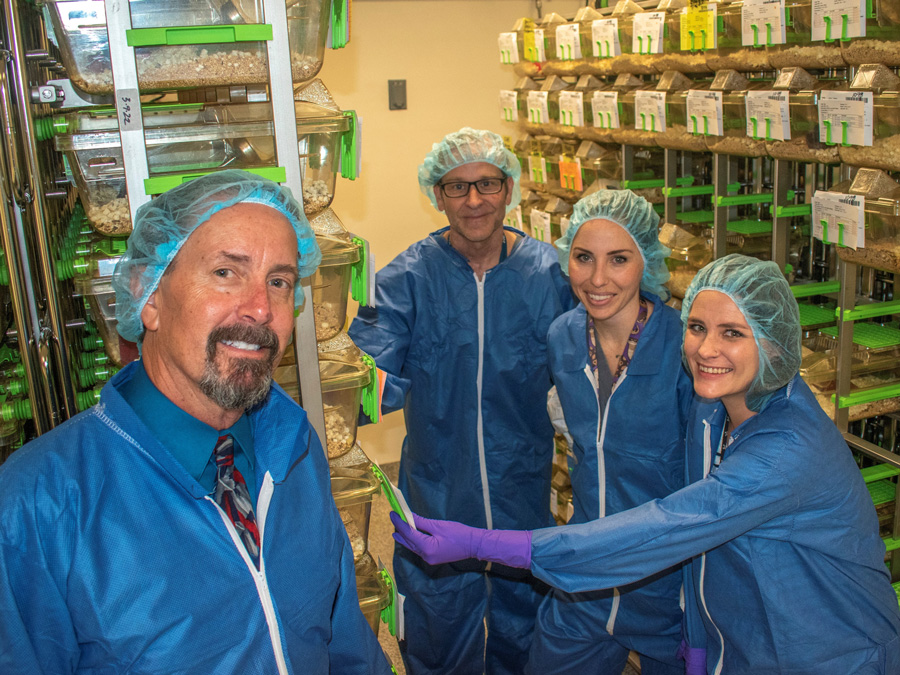Following a comprehensive site visit and review process, the Association for Assessment and Accreditation of Laboratory Animal Care International (AAALAC) has confirmed continued full reaccreditation to the University of Nevada, Reno. This voluntary and internationally recognized accreditation reflects the University’s commitment to go beyond the standards required by regulatory agencies to achieve excellence in animal care and use.
AAALAC commended the faculty and staff involved for “providing and maintaining an excellent program” and cited the “program cohesiveness across all locations under the leadership of the Office of Animal Resource veterinarians” as being “especially noteworthy.”
The University connects with animals in many ways, from those in research and teaching programs both in observed field settings and in campus laboratories, to those in the farm settings of the Nevada Experiment Station, part of the College of Agriculture, Biotechnology & Natural Resources. The complex animal care program is overseen by Animal Resources, part of Research & Innovation, and is further supported by the faculty-led Institutional Animal Care and Use Committee.
In their exit briefing, reviewers noted that of the AAALAC-accredited programs around the world, the University’s is especially impressive since it represents one of the widest varieties of animal care settings. The University’s animal care program even includes public-lands grazing at its Great Basin Research & Extension Center in Eureka, Nevada, and Gund Ranch Research & Training Facility near Austin, Nevada, both part of the Nevada Experiment Station.
“There are many faculty, staff and students who connect with our animal care program, and our re-accreditation by the AAALAC affirms their commitment to quality, ethical care. Our Animal Resources team is one of the very best, and provides invaluable leadership and support,” said Mridul Gautam, vice president for research and innovation.
Animal Resources Director and Campus Attending Veterinarian Ben Weigler describes the review by the AAALAC as rigorous and valued, adding it helps keep the focus on continuous improvement.
Animal Resources includes two full-time veterinarians with backup faculty who provide on-call services around the clock, plus additional technicians and staff members, many certified by the American Association for Laboratory Animal Science. The team oversees animal care and regulatory compliance University-wide, facilitates training for those who work with animals, and helps develop curriculum and learning opportunities for students.
“In so many ways the Animal Resources team goes above and beyond what’s expected or required,” said Charlene Hart, associate vice president for research administration and to whom Animal Resources reports. “Through their commitment and professionalism, they make an important contribution to research, teaching and service, and they take great pride in doing so.”
The University’s Institutional Animal Care and Use Committee (IACUC) has an integral role. Working closely with Animal Resources, the faculty-led IACUC oversees the University's animal care and use programs, facilities and procedures, and its purview includes all animals in the University's programs for research and teaching across the span of basic sciences, biomedical research, and agricultural and wildlife settings. The IACUC reviews all requests to use vertebrate animals and works to ensure compliance with state, federal and international regulations, plus conducts inspections of areas where animals are housed and used.
“The IACUC focuses on evaluating animal welfare and providing local oversight of institutional animal care and use programs. They have at least one public member who is not a scientist to help ensure completely unbiased ethical judgements for each project,” Weigler said. “They provide guidance toward the goal of attaining the highest quality of animal care coexistent with achieving the best possible scientific results.”
“The successful renewal of the University’s AAALAC accreditation reflects the outstanding commitment of our Animal Resources team led by Dr. Benjamin Weigler, who provide the highest level of care for animals on our campus,” said Dean Burkin, University of Nevada, Reno School of Medicine professor and chair of the University’s IACUC. “This success can also be attributed to our outstanding faculty, students and staff engaged in research and who demonstrate a strong commitment to animal welfare.”
“We are partners to the researchers and scientists,” said Weigler, an accomplished veterinarian and researcher who joined the University in 2015. “In research, providing the latest standards of veterinary services around the clock for all the animals is not a choice; it’s a mandate.”
In keeping with AAALAC standards, animals are involved in research only when there are no non-animal alternatives and when it is done in an ethical and humane way. The vast majority of animals involved in research at the University are rodents, such as mice and rats, bred for studies to advance medicine and science. Cows, sheep, birds, fish, large game, reptiles and amphibians, including various endangered or threatened species, are examples of the animals that are part of studies by University faculty. Even for observational research or field study, protocols approved by the IACUC must be in place to guide possible interactions with or injuries to the animals involved.
AAALAC accreditation was first awarded to the University in 2007. A private, nonprofit organization that promotes the humane treatment of animals in science, the Association conducts an on-site peer review by experts every three years. In addition to AAALAC’s review and IACUC’s oversight, the University’s animal program is reviewed annually, at a minimum, by the U.S. Department of Agriculture and is subject to oversight by the Office of Animal Laboratory Welfare, part of the National Institutes of Health.
 Caring for animals in farm settings are Bo Kindred, assistant director of the Nevada Experiment Station; Cara Goss, livestock coordinator at the Main Station Field Lab; Scott Huber, assistant director and field research coordinator of the Nevada Experiment Station; and Walt Mandevillle, veterinarian with Animal Resources.
Caring for animals in farm settings are Bo Kindred, assistant director of the Nevada Experiment Station; Cara Goss, livestock coordinator at the Main Station Field Lab; Scott Huber, assistant director and field research coordinator of the Nevada Experiment Station; and Walt Mandevillle, veterinarian with Animal Resources.














